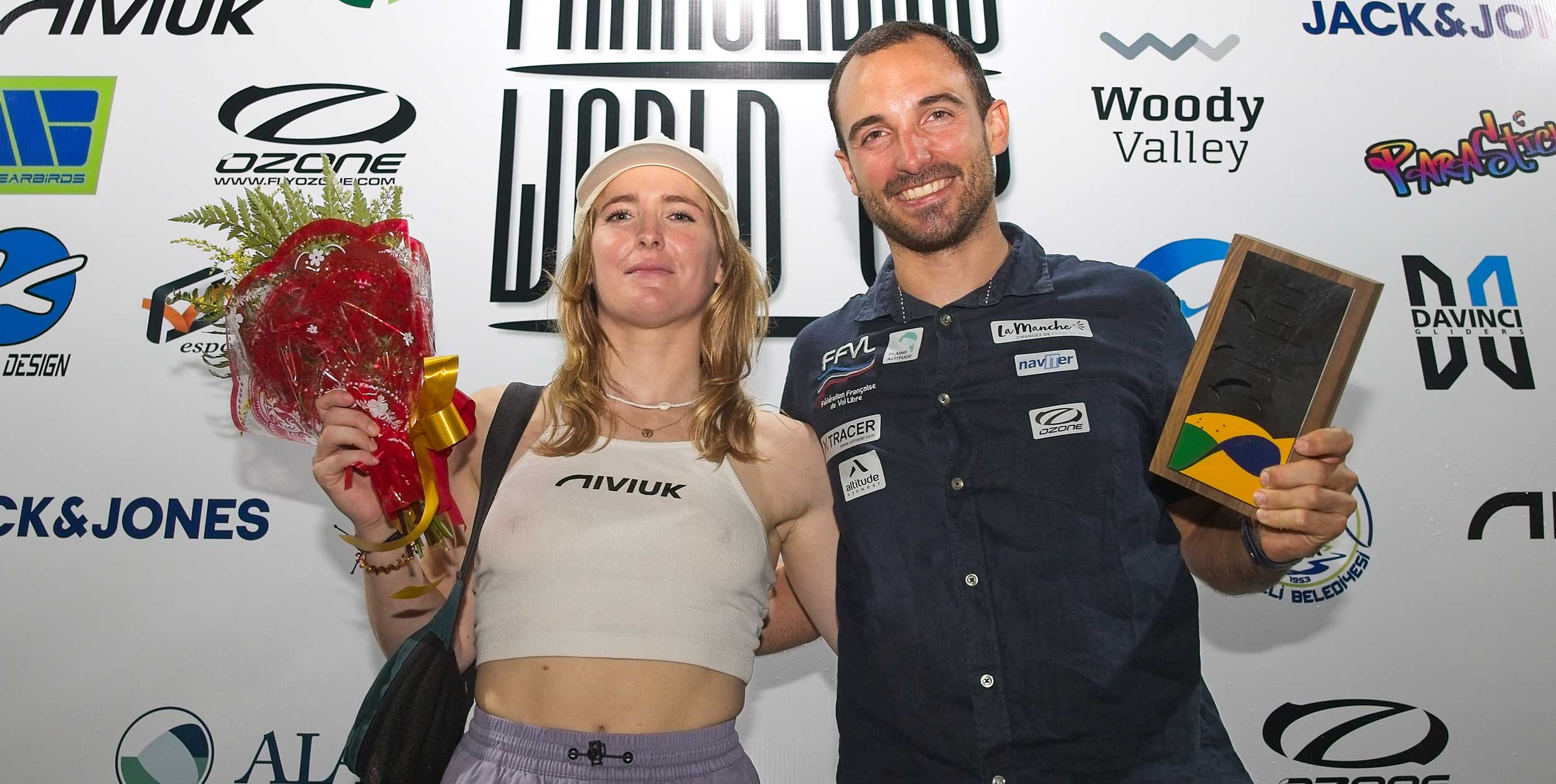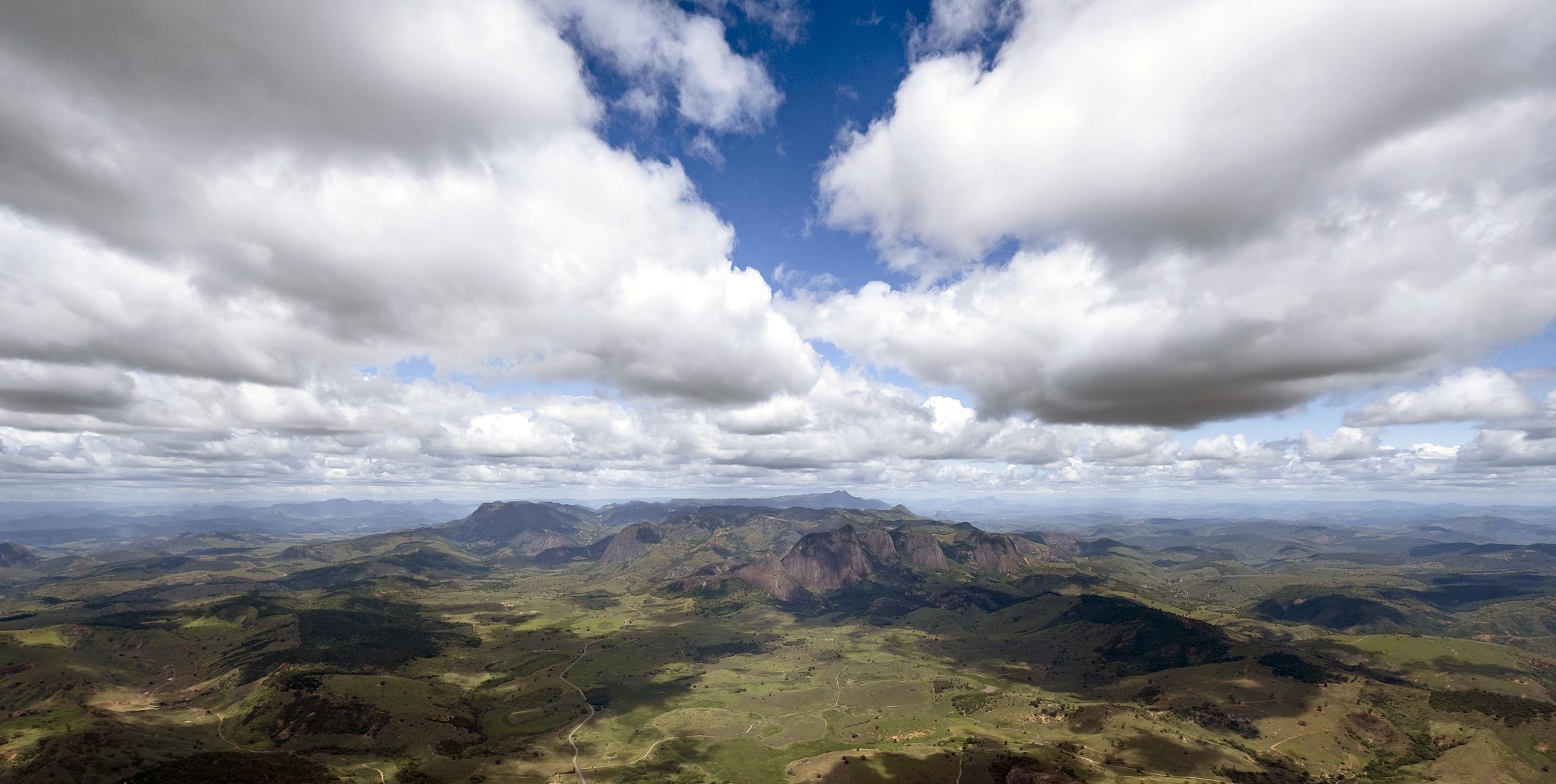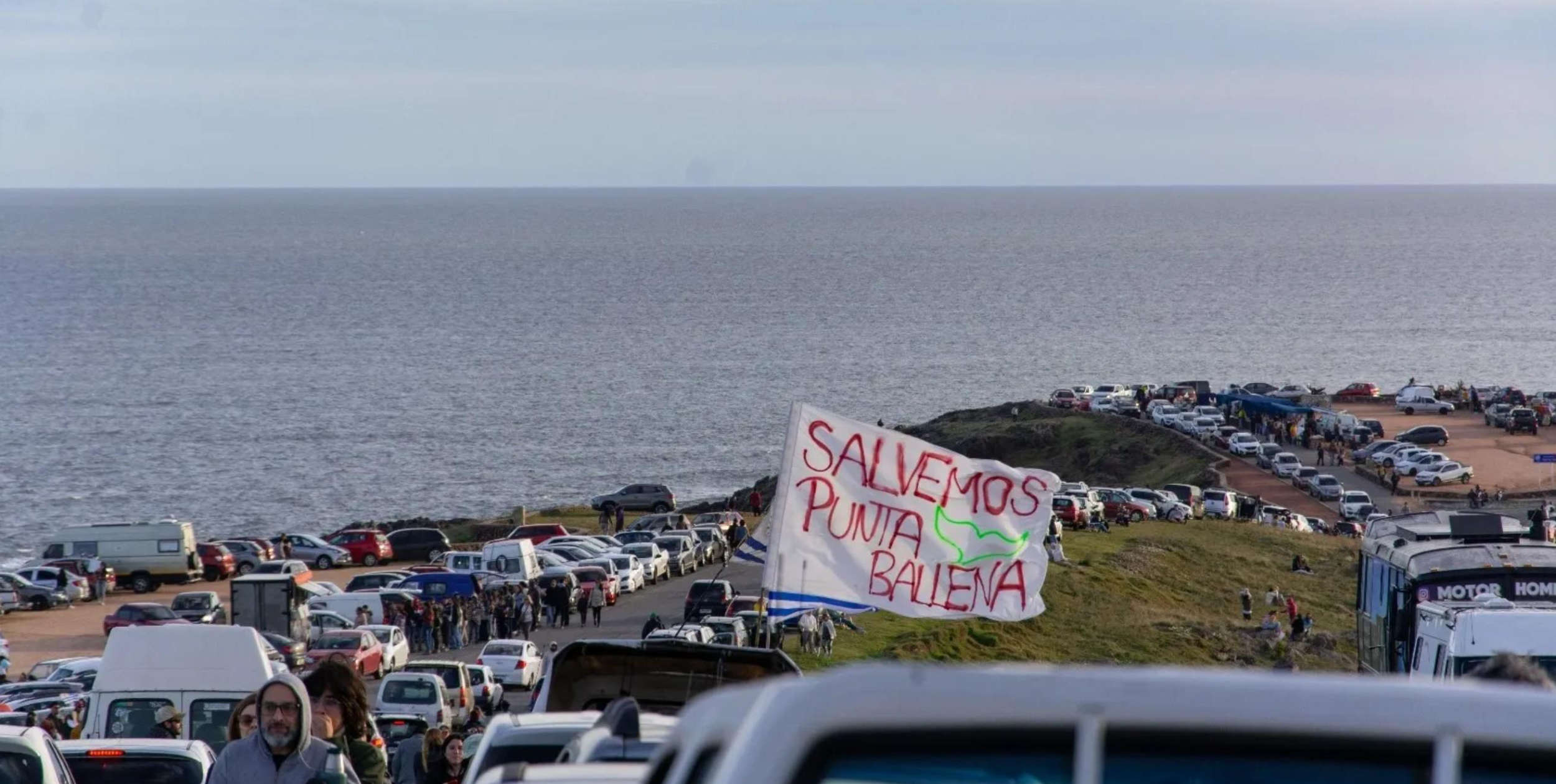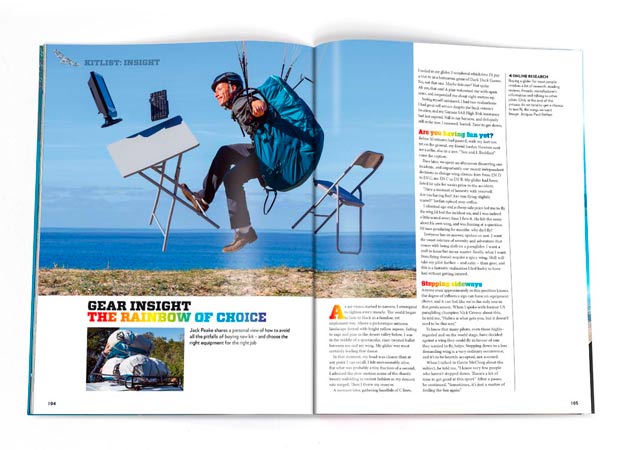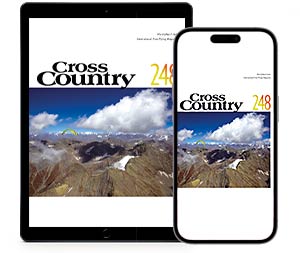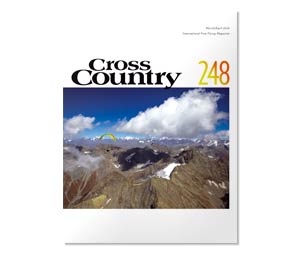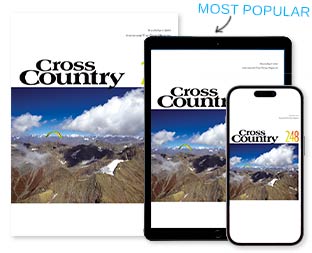Classic Quixada, where paragliding meets dragon slaying. Record beating stomping ground of Frank Brown
Hugh Miller meets Brazil’s Frank Brown and gets some flatland flying secrets. Published in November 2000
Brazil’s Frank Brown has shot to the top of the paragliding scene, busting through the ranks of Swiss, French and Austrian pilots to finish 17th overall in his PWC season. Thanks to the successes of pilots like Tsuyoshi Tsuji (Japan), Frank Brown, Andrew Smith (RSA) and Marion Scotty (USA), the Paragliding World Cup is still just able to hold onto its claim to be an international circuit. But what is it like trying to break into the scene from afar?
I met Frank in the Azores, where he was taking a break with his girlfriend between PWC Portugal (where he placed second) and PWC Mieussy. Tall and with an easy smile, he comes across as something of a gentle giant.
But when I ask him what five words he would chose to describe himself, his first three ’persistent, stubborn and optimistic’ speak volumes about the ambition that burns within him. The other two words? ‘Good-humoured and shy.’
I couldn’t detect a trace of shyness in Frank’s responses, only sincerity. And unlike some of the younger guns who come charging into the competition scene, Frank’s calm confidence is matched by humility, not arrogance. Previous success has not swelled his head. The title of Brazilian Champion rests easily on his shoulders. He’s won his Nationals for the past three years running but each competition has been a fight.
In Brazil we have six or seven very good pilots, he explains. ‘If you make one tiny mistake then the others will overtake you. Unfortunately I am the only one with enough points to qualify for entry to PWCs.’
Frank has only been flying since the mid-1990s, so how has his flying developed so fast? It seems his turning point was learning how to lose. ‘I’ve kind of accepted fate now. I’ll just roll along in life, accepting whatever happens, good or bad.
‘I’ve learnt that if anything goes wrong, then it can only be your own fault: luck has nothing to do with success or failure. In the past I just couldn’t accept losing, but now I’m OK with it. Just don’t come near me after I’ve bombed!’
What has been the highlight of your year so far?
PWC Granada. Wow, that was a physical competition. On the open distance day I flew for seven hours. I was drinking lots in the air to avoid dehydration, and by 6:00 p.m. I was 150 km out and absolutely desperate for a pee.
Could you not have just pulled the old fellow out and had a wee alfresco?
It was just too hard. I was concentrating and couldn’t go. I was desperate to land, but I got a low save and went straight up again. With every 100 m of gain, the pain got worse with the cold, and when I got to 3000 m I just released into my flying suit! I soaked myself, but it was nice and warm for a few seconds anyhow. An hour later I was on final glide, and I spotted a river to land next to, thinking I could wash myself off before hitching home. I touched down and ran over to find to my misery a bone-dry stream-bed. Still, it’s all good practise for Ceara this year!
You must be charged for this year’s Cross Country Classic?
Yes, we want to fly 300 km this year. The El Nino effect is working well, and we’re predicting a really good season this year with strong 35 km/h winds and 4 m/s to 6 m/s thermals. But we have to learn to fly fast. Ceará is only 4 degrees south of the equator, and the sunset happens fast and early with only 12 hour day. You usually only get 6 1/2 hours of flying. But the thermals always kick off from the same places, and we’re learning them. Two years ago André Fleury did 216 km in 6 1/2 hours, and last year I did 217 km in 5 hours, so we’re speeding up.
How is the Brazilian team shaping up for the 2001 Worlds in Granada?
We’re talking lots with the hang glider boys, who took the team gold at the last Worlds, and have been doing really well recently. They have found that air to air radio work and flying as a team has really boosted their scores. Our team communications are improving, but as ever, we need the opportunities which are being denied us.
What do you mean by that?
The CIVL decision on team sizes is very hard on us. There’s five other Brazilian pilots all as good as me but they haven’t had the chance to prove it. Virtually all the CIVL and PWC events are in Europe, so how are we meant to qualify? Before PWC Brazil, I only had two ratings. I was twice Brazilian Champion and couldn’t get into the PWCs! We’re all really lacking international experience.
But I guess this year has changed that, at least, for you.
Yes, this year has been a dream, flying with the best pilots in Europe. Red Bull and Nova both sponsor me and I’m very grateful.
As the interview developed, Frank began hinting at some of his core flying philosophies learnt over his past two years of flatland flying. For some pilots, the flatlands seem like a bewildering black-hole, with few visual clues to help decide your route as you venture into the unknown. What follows are a few of his ideas that may help you develop your understanding of how the air works over the flats.
THE CYCLE
The key to flying efficiently is timing the cycles. As you enter a weak thermal, you have to decide whether to drift with it or to chance pushing upwind to see if there is a stronger core. To make this decision, you have to be aware of what stage the thermal cycle is at before you reach the core. If it is towards the end of the cycle, and you have reached the tail of the thermal, then you must take the weak climb. But if it is at the beginning, and it is just kicking off, then you can afford to search and get the stronger core. Indeed, if you fail to do so you will probably lose the weak lift and sink out because you will not have managed to find the proper thermal.
CLUES
As you approach the source, use clues like birds and other gliders to gauge whether you’re arriving at the start of the climb or the end. If it is a strong climb, it will punch through the wind gradient. So, if you just circle you will soon fall downwind out of the back of the core. Keep punching back into wind to climb in a series of steps.
USE YOUR GPS
It is amazing what a GPS can tell you. Use your GPSs snail trail to record your thermalling circles, and after you’ve landed look at it and review your technique. See how you slowly hone in on each core through the varying radii and patterns of your circles.
MAP OUT A NEW AREA
You can also use GPSs to help you map out a new area. In Ceara, Frank and his friends overlaid their GPS trails after a morning’s flying and discovered that over the town, their climbs had all converged together. There was nothing on the ground to suggest a thermal source, so it could only be a common convergence of wind. The area is now regarded as a house thermal.
DUST DEVILS
In the Brazilian flatlands, Frank has concluded that dust devils virtually always indicate the tail end of a thermal. It is common belief that dust devils indicate the core of the thermal, but Frank has a different theory. He believes that as a strong thermal develops, it blocks off the prevailing wind much like a building, causing the wind to flow around it. Just downwind there is an area of rotor, and it is this swirling air that gets sucked into the tail of the thermal, whipping up tall dust devils. Frank reached this conclusion after frequently encountering much stronger lift upwind of dust devils.
INVERTED CONDITIONS
On hot, stable days, the thermals are generally much narrower and more punchy than normal as they try and squeeze their way through the sticky stable layers. In these conditions, Frank believes it is essential to do tight 360s and just concentrate to hanging onto the core for dear life, even if it means some of your 360 is in sink. You must use your intuition in such conditions, and never be inhibited by the decisions or actions of other pilots, he says. Use the force!
This article was updated in January 2011


